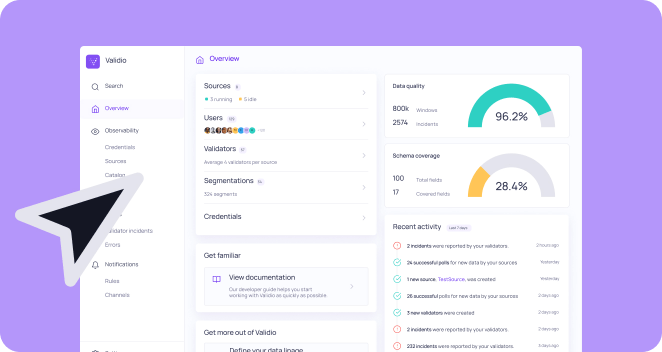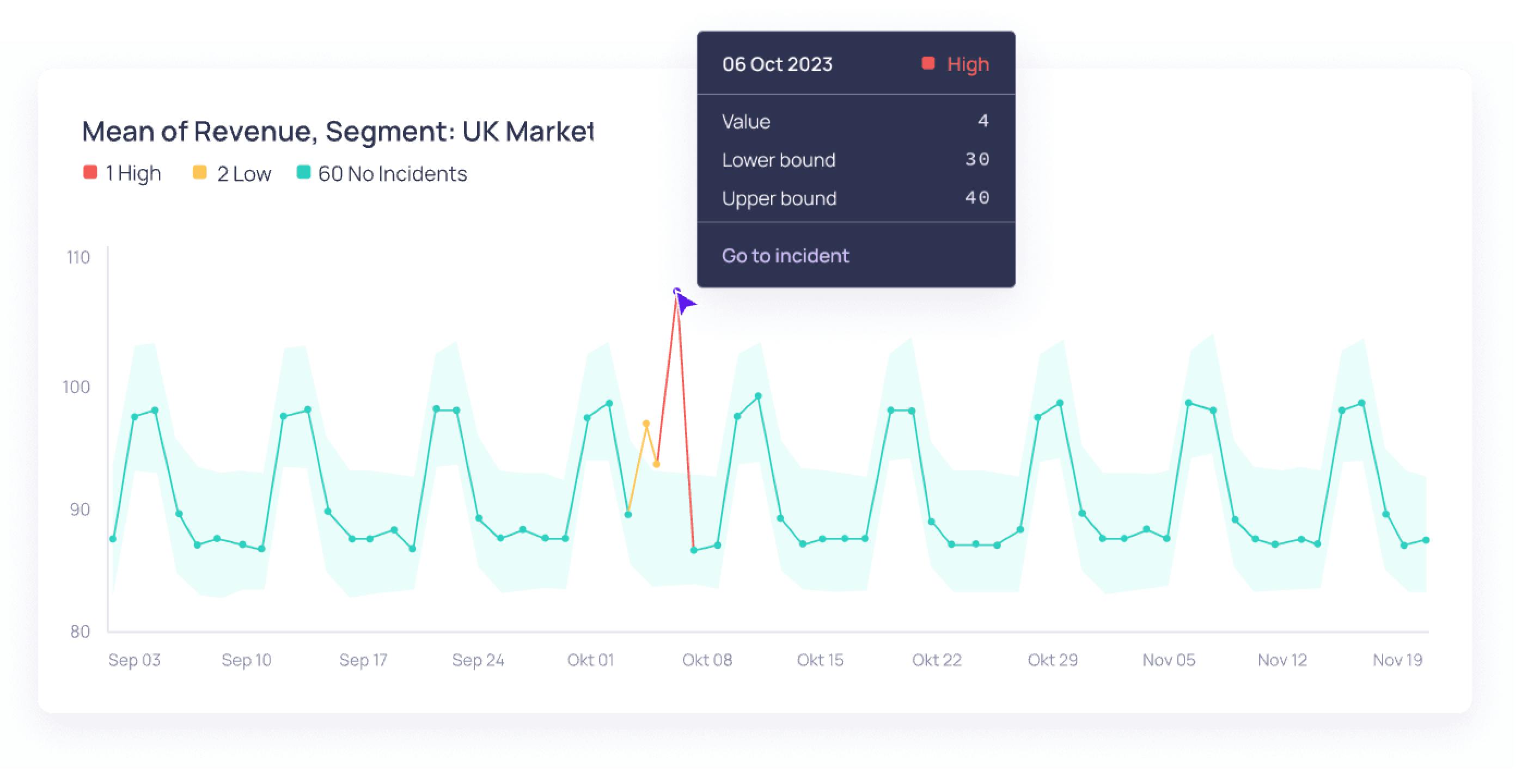That’s why our Product & Engineering Team has been hard at work to enable this dbt integration. It will help data teams deliver higher quality data at a greater scale, by combining the power of dbt tests with Validio’s Data Trust Platform.
How to level up your dbt tests with Validio
1. Scale testing with automated data observability
The ultimate goal of both testing and data observability is to identify and resolve issues. However, they have different methods. Testing is biased - it comes from a human stating a condition they expect to be true. Observability is impartial - it asks, do we know the state of the data at all times? How has it changed?
As organizations scale, there are endless possibilities to test. While you can only write tests for a limited number of things, you can add data observability on top of your tests. It will help you detect the issues you can’t create manual tests for.
In Validio, dbt users can:
- Choose between integrating to dbt Core or dbt Cloud
- Use Validio’s UI to quickly scale tests to cover all the data assets needed
- Monitor for dbt jobs that tend to take longer than expected
- See detailed information about dbt tests and model runs
- Use Validio’s Data catalog to notify data owners and collaborate on resolving issues







